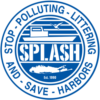October 4, 2013 By JOIE TYRRELL joie.tyrrell@newsday.com
Long Beach High School students Chandler McMillan, left, Jamie Morgenstern and Arielle McManus pick up debris in advance of the main cleanup day at a 35-acre salt marsh adjacent to the Long Beach school district’s Nike Alternative High School in Lido Beach. (Oct. 3, 2013) (Credit: Howard Schnapp)
Long Beach High School senior Samantha Walsh will join fellow students along with Hofstra University faculty members Saturday in cleaning up a local salt marsh — an effort that, for her, represents a way to help her storm-damaged hometown.
“I feel like when Sandy hit, we were trying to get ourselves back together and our homes back together,” said Walsh, 17. “And now that is done, I need to focus on the community and environment.”
Part of the 35-acre marsh, considered one of Nassau County’s last remaining natural salt marshes, is located on school district property and adjacent to the district’s Nike Alternative High School in Lido Beach.
The National Oceanic and Atmospheric Administration (NOAA) recently awarded Hofstra a $75,000 grant to remove debris from the marsh, which is regularly used for research and educational projects.
The property has been littered with sections of dock, 55-gallon drums, pieces of plastic and other debris that accumulated after the storm hit last October, said Hofstra biology professor Jason Williams, one of the faculty members leading Saturday’s cleanup.
Removing the debris is critical to maintain the vulnerable environment, he said.
“One of the real problems is, once the plants that lined the creeks die off, then you get erosion of the tidal creeks,” Williams said. “What we want to do is remove the debris and have healthy plant growth right up to the edge of the tidal creek.”
The NOAA grant also provides funding for research by a Hofstra graduate student and Long Beach high school students who will investigate the salt marsh’s recovery after the debris is removed.
James Engeldrum, the Long Beach school district’s science director, said the marsh has long served as a learning environment for students. Elementary students often took field trips there to walk an observation deck over the marsh. The deck was destroyed in the storm.
“The salt marsh is a crucial environmental resource,” he said, adding that it protects the mainland from floods and serves as a filter from the mainland to the bay and ocean. “For the students it was important for them to have an understanding of this important part of our ecosystem.”
Jamie Morgenstern, 17, is one of a group of seniors who will use the area for research.
“We are testing the effects of the debris on the salt marsh and trying to see the resilience of the plants in the marsh and the long-term effect of this debris,” Morgenstern said.
Saturday’s cleanup is limited to about 60 high school and college students as well as faculty. More cleanups will be scheduled.
Brandan Persaud, 16, a junior, recalled going on a field trip there when he was in elementary school and said he joined the cleanup because “I feel that option should be available to the elementary kids now.”
Robert Weltner, president of the Freeport-based nonprofit Operation SPLASH, which stands for Stop Polluting Littering And Save Harbors, called the collaboration between high school and college students “outstanding.”
“Education is critical to finding a solution,” he said.







